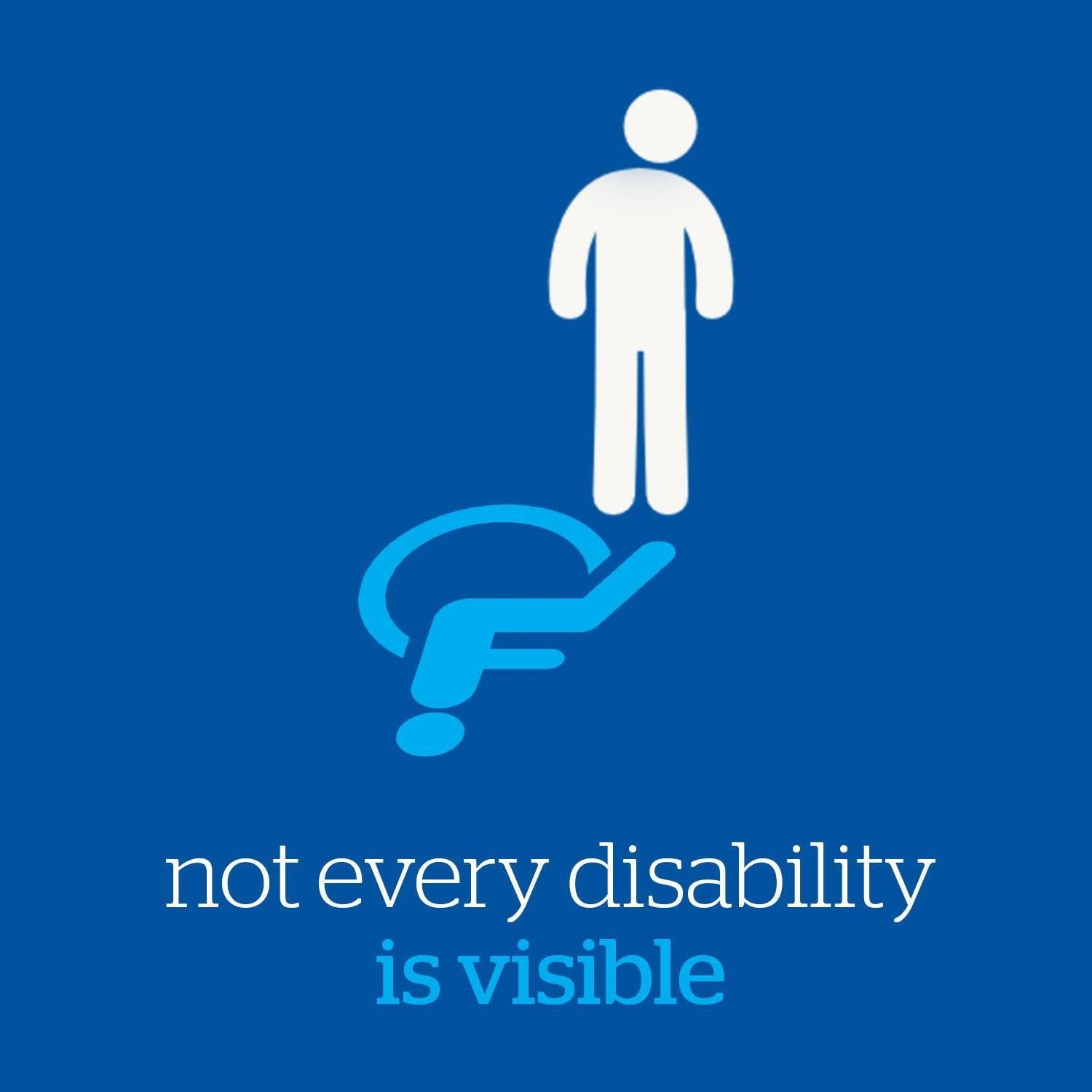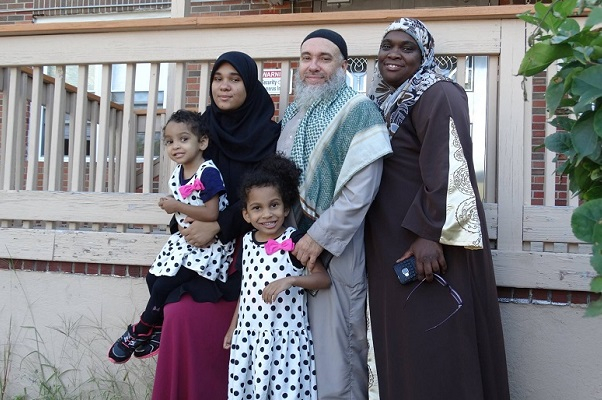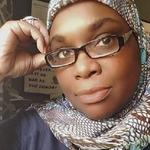Why Those Living with Invisible Disabilities Should Also Matter in Our Muslim Communities
Community
|
Oct 28, 2021
|
5 MIN READ

Image source: Storyblocks.com
October marks National Disability Employment Awareness Month. And according to the official document in the Library of Congress, it is a time for people to develop an appreciation for the accomplishments of people living with disabilities and “whose work helps keep the nation's economy strong and by reaffirming their commitment to ensure equal opportunity for all citizens.”
While that is a wonderful sentiment, let’s be real about who this month serves. The month of observation was not created to center people living with various levels of disability, only those who can contribute to the capitalist economy of our society.
Of course modern meanings and interpretations of the month may differ from its original establishment. However, the dichotomy of its origin and its current meaning as interpreted by many of us who live with disabilities show the complex meaning of disability in our society. It also poses challenges to appreciating how people living with them cope and thrive within our nation's social structure, which struggles to value them or the impact of their disabilities. This is especially true for people who live with , invisible disabilities (disabilities not visibly apparent).
I live with multiple physical, mental and emotional disabilities. That’s right, mental and emotional. Too often, people tend to use tunnel vision when it comes to disability. They focus on what can be seen, ignoring ways one can suffer in silence with disabilities not obviously seen or understood by the greater public.
The American Disabilities Act (ADA) defines “disability” as a legal term, wherein, “a person with a disability as a person who has a physical or mental impairment that substantially limits one or more major life activities.”
Note: Disabilities may be defined differently under other laws, like those regulating Social Security Disability, for example. And when it comes to mental disabilities, that is also subject to a host of definitions and categories by the Diagnostic and Statistical Manual of Mental Disorders.

Image source: Pinterest
Similarly, the Center for Disease Control provides a medical definition of “disability” as “any condition of the body or mind (impairment) that makes it more difficult for the person with the condition to do certain activities (activity limitation) and interact with the world around them (participation restrictions).”
The point is that disabilities are not limited to what any can see. Neither definition includes the need for a disability to be visible. Instead, it is the impact on one’s life, which will vary. Consider my story.
A Disability that Goes Misunderstood or Unnoticed
I’ve experienced years of people misinterpreting or not knowing the ways my invisibilities infuse my life with daily challenges. On the outside, they see formidable Layla, who tells it like it is and is ready to square up to protect herself and those she loves. They see me stand to teach workshops or interact on social media, giving commentary and sharing a variety of interviews I’ve done. What they don’t see is the agony wracking through me while I stand because of sciatica or half my body turning cold while sitting to write or interact on social media because of nerve damage.
The pain typically begins at about 20 minutes. Even now, I have to get up from writing this article due to sitting too long.
Approximately 20 percent of adults in the U.S. have an invisible disability, which can include a host of cognitive and emotional disabilities. Invisible disabilities are not immediately apparent, but their effects on the body are for the sufferer. Invisible impairments may not require assistive technology. There’s no chair or cane for someone who can’t function due to anxiety or obsessive thoughts.
I live with multiple physical, mental and emotional disabilities. That’s right, mental and emotional. Too often, people tend to use tunnel vision when it comes to disability. They focus on what can be seen, ignoring ways one can suffer in silence with disabilities not obviously seen or understood by the greater public.
Layla Abdullah-Poulos
People may not immediately recognize Invisible disabilities, and they may have an inability to appreciate it or just reserve judgment about what they see people doing in the world around them. I get funny looks in public Muslim spaces when I sit to pray next to the older aunties. I look young for my age, and it seems unimaginable to many of my co-adherents that I am not able-bodied enough to stand or make sajdah.
I get “just do this” or “just try this.” So, on top of the internal guilt associated with performing acts of ibadah inefficiently and missing things like the ability to do a full prayer with all the movements (a pain that never goes away), I must explain myself before lifting my hands for takbir or after moving my head right and left in salaams.
It would be wonderful to be able to focus without justifying why I am worshipping in a way that my disabilities allow, but that would require Muslim culture to have open conversations about layers of disability so suffers are not subjected to silent and not-so-silent judgment.
My youngest child also has an invisible disability. Like me, she looks like a healthy child on the outside, and much of her is relatively healthy. However, she does have a chronic illness that if left uncared for will debilitate her. I make sure to constantly advocate for her and keep a list of her needs so her father and I can prevent her condition from worsening.

Layla, her husband and some of her children.
Alhamdulillah, leaders of our local mosque do accommodate. I hope it’s not because of my husband’s position on the board but because they’re fulfilling a divine mandate from Allah (S to care for their ummah, for us, the same way Prophet Ayyub’s (as) wife cared for him when he was bedridden for ten years.
I think the latter is the case.
In a video about disability, Imam Omar Suleiman explains that the Prophet Muhammad (saw) made sure disabled sahaba, like Abdullah ibn Umm-Maktum, who was blind, was selected as a muadhin (caller to prayer) along with Bilal ibn Rabah. Imam Suleiman explains, “The Prophet (saw) made every effort to make him feel like he was part of the Ummah in every single way so that he wouldn’t feel out of place or feel awkward.”
Managers of Muslim spaces, organizers of Muslim events and Muslims in general should increase their sensitivity to the realities of Muslims living with all layers of disability, which is a test from Allah (S) for them and us. How? Do the work for yourself and learn more about how disability inclusion in our Muslim communities from organizations like Muslims Understanding and Helping Special Education Needs (Muhsen).
One in four people in the U.S. live with a disability. The number increases to two in five for people 65 years and older. Increasingly more people will have to learn how to cope with an impairment, including Muslims. It’s so important to make sure Muslim spaces accommodate disabled adherents.
Go to your masjid and see how accommodating it is – are the wudu spaces disability-friendly? Are we welcoming to everyone coming in? Is there programming about disabilities, including invisible disabilities? How about khutbas discussing the mercy and kindness we must show one another, and how we should make our spaces more inclusive?
We must show the mercy we want Allah (S) to show us.
Does your masjid or Muslim space accommodate those with disabilities? Are you living with a disability? Share your story with us in the comments below.
Subscribe to be the first to know about new product releases, styling ideas and more.
What products are you interested in?

